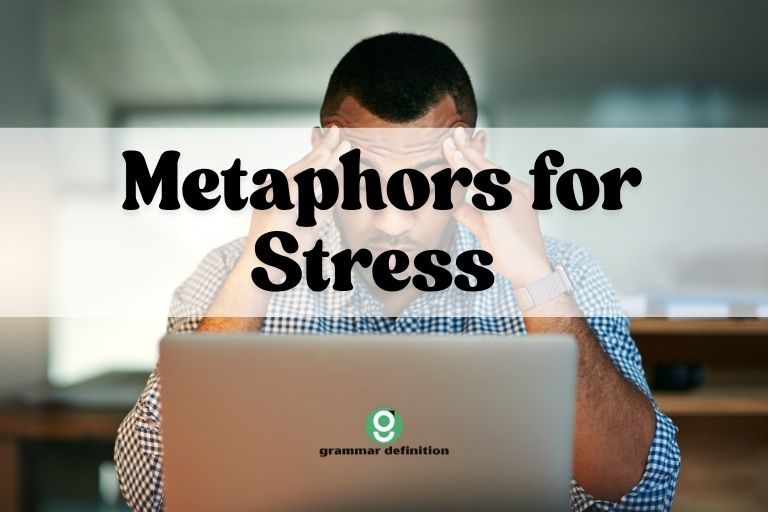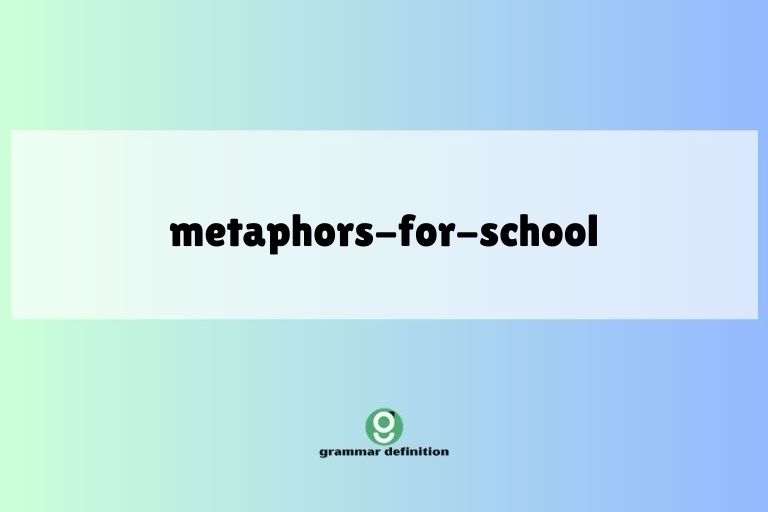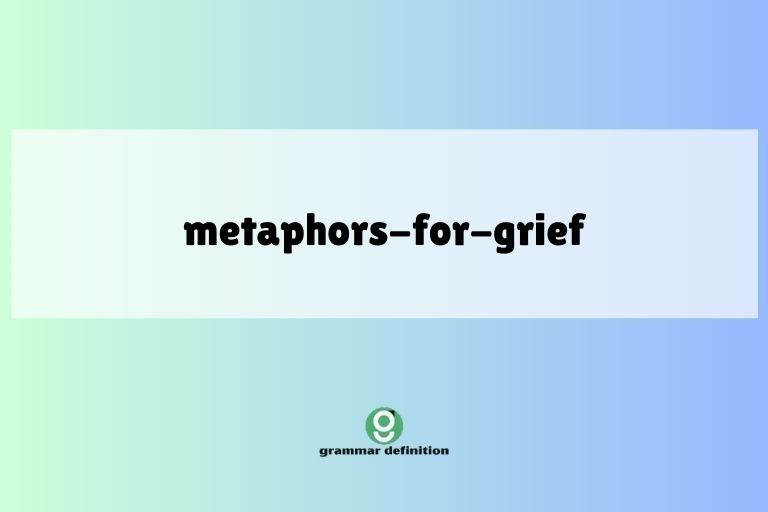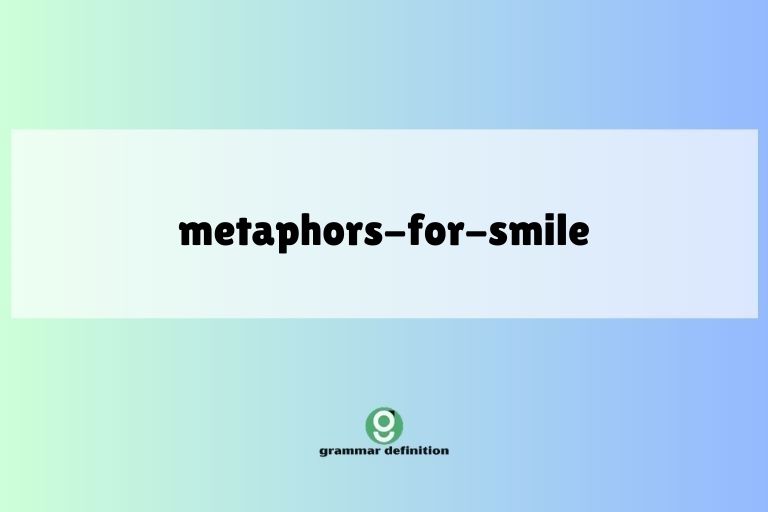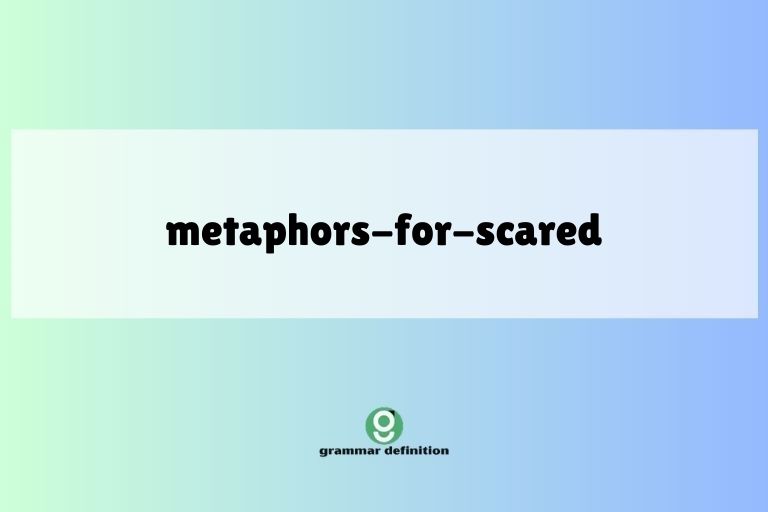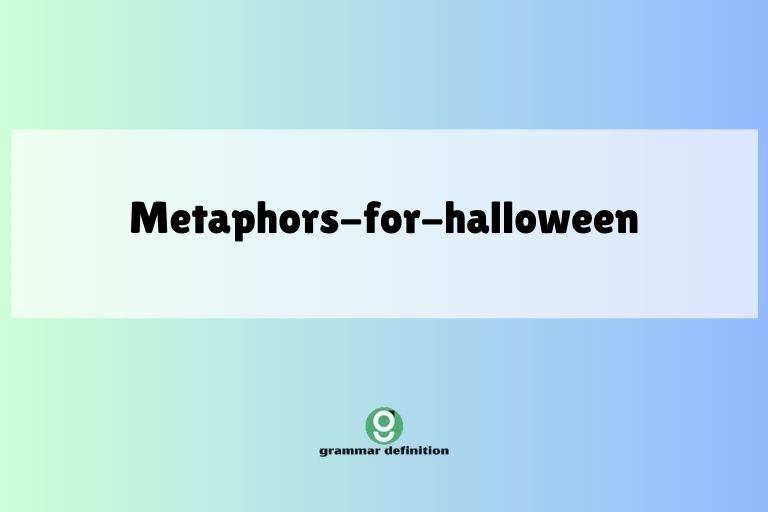Heart Metaphors: Exploring Figurative Language in English
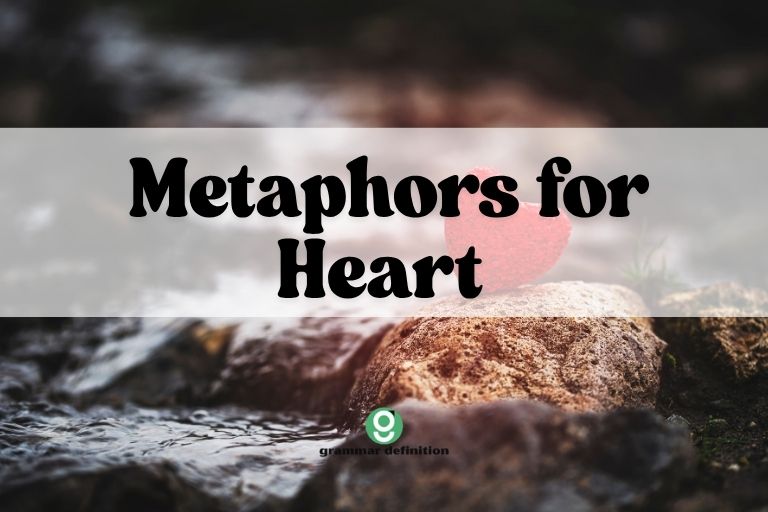
Metaphors are powerful tools that enrich our language, allowing us to express complex emotions and ideas in vivid and relatable ways. When it comes to the heart, a symbol deeply entwined with emotions, love, and courage, metaphors provide a particularly compelling means of expression.
Understanding heart metaphors not only enhances our comprehension of literature and poetry but also improves our ability to communicate effectively and empathetically. This article explores the diverse range of heart metaphors in the English language, examining their meanings, structures, and usage, and providing practical exercises to master their application.
This guide will benefit students, writers, and anyone looking to deepen their understanding of figurative language.
This article is designed for English language learners, writers, and anyone interested in understanding the nuances of English figurative language. By exploring the various types of heart metaphors, their structural elements, and practical applications, readers will gain a deeper appreciation for the richness and expressiveness of the English language.
Table of Contents
- Definition of Metaphors for Heart
- Structural Breakdown of Heart Metaphors
- Types and Categories of Heart Metaphors
- Examples of Heart Metaphors
- Usage Rules for Heart Metaphors
- Common Mistakes with Heart Metaphors
- Practice Exercises
- Advanced Topics in Heart Metaphors
- Frequently Asked Questions (FAQ)
- Conclusion
Definition of Metaphors for Heart
A metaphor is a figure of speech that directly compares two unlike things without using “like” or “as.” It asserts that one thing *is* another, creating a vivid image or conveying a deeper meaning. Heart metaphors extend this concept by using the heart, both literally and figuratively, as a symbol to represent emotions, courage, love, and other abstract concepts.
These metaphors tap into the cultural significance of the heart as the center of feeling and being.
Metaphors for the heart serve several functions in language. They allow us to express complex emotions in a concise and relatable way.
They add depth and imagery to writing, making it more engaging and memorable. They also provide a shared understanding of emotional experiences, as the heart is universally recognized as a symbol of love, pain, and strength.
The use of heart metaphors allows for a more nuanced and evocative expression of human experiences than literal language permits.
Heart metaphors can be found in various contexts, from literature and poetry to everyday conversation and popular music. They are used to describe the joys of love (“a heart filled with sunshine”), the pain of heartbreak (“a shattered heart”), and the courage to face adversity (“a brave heart”).
Their versatility makes them a powerful tool for writers and speakers alike.
Structural Breakdown of Heart Metaphors
The structure of a heart metaphor typically involves two key elements: the tenor and the vehicle. The tenor is the subject being described (e.g., an emotion, a person’s character), while the vehicle is the heart or a related concept that is used to represent the tenor (e.g., “a heart of gold,” where the tenor is the person’s kindness and the vehicle is “heart of gold”). Understanding this structure helps in analyzing and creating effective metaphors.
The effectiveness of a heart metaphor depends on the relationship between the tenor and the vehicle. The more resonant and relatable the connection, the more impactful the metaphor will be.
For example, “a broken heart” is a powerful metaphor because it connects the physical pain of a broken object with the emotional pain of loss or rejection. This connection is easily understood and deeply felt.
In addition to the tenor and vehicle, the ground is the shared characteristic or association between the two. In the example “a heart of stone,” the ground is the idea of being unfeeling or cold. The heart (vehicle) is being compared to stone to describe someone (tenor) who lacks empathy. Identifying the ground is crucial for interpreting the intended meaning of the metaphor.
Types and Categories of Heart Metaphors
Heart metaphors can be categorized based on the specific qualities or actions attributed to the heart. Here are some common categories:
Heart as a Container
This category depicts the heart as a vessel that holds emotions, thoughts, and feelings. The heart can be full, empty, overflowing, or burdened, reflecting the emotional state of the individual.
Heart as a Fragile Object
Here, the heart is portrayed as something delicate and easily broken. Metaphors in this category often describe the vulnerability of emotions and the pain of heartbreak.
Heart as Fire
This category uses fire to represent intense emotions such as love, passion, and desire. The heart can be ablaze, burning, or smoldering, depending on the intensity of the emotion.
Heart as a Weapon
In this less common but equally powerful category, the heart is seen as capable of inflicting pain or causing harm, either intentionally or unintentionally. This might refer to the power of attraction or the sting of betrayal.
Heart as a Compass
The heart serves as a guide or source of direction. This category emphasizes the heart’s role in leading individuals toward their true desires or moral choices.
It speaks to the idea of following one’s heart.
Examples of Heart Metaphors
Below are several tables illustrating different types of heart metaphors, along with examples of how they are used in sentences.
Table 1: Heart as a Container
This table provides examples of heart metaphors where the heart is depicted as a vessel holding emotions, thoughts, and feelings.
| Metaphor | Example Sentence |
|---|---|
| A heart full of joy | Her heart was full of joy after receiving the acceptance letter. |
| An empty heart | After the loss, he felt an empty heart and struggled to find happiness. |
| A heart overflowing with love | Her heart was overflowing with love for her newborn child. |
| A burdened heart | He carried a burdened heart, weighed down by guilt and regret. |
| A heart filled with sorrow | Her heart was filled with sorrow at the news of her friend’s illness. |
| A heart brimming with hope | Despite the challenges, her heart was brimming with hope for the future. |
| A heart devoid of feeling | The villain’s heart seemed devoid of feeling, showing no remorse. |
| A heart heavy with sadness | His heart was heavy with sadness after the argument with his family. |
| A heart overflowing with gratitude | She felt a heart overflowing with gratitude for all the support she received. |
| A heart filled with longing | Her heart was filled with longing for her homeland. |
| A heart holding secrets | He had a heart holding secrets that he dared not reveal. |
| A heart filled with wonder | The child’s heart was filled with wonder at the sight of the stars. |
| A heart overflowing with compassion | Her heart was overflowing with compassion for the suffering. |
| A heart filled with fear | His heart was filled with fear as he walked alone in the dark. |
| A heart holding onto memories | Her heart was holding onto memories of happier times. |
| A heart filled with anticipation | The child’s heart was filled with anticipation for Christmas morning. |
| A heart brimming with excitement | Her heart was brimming with excitement for her upcoming trip. |
| A heart filled with dread | His heart was filled with dread as the deadline approached. |
| A heart holding onto pain | He had a heart holding onto pain from past experiences. |
| A heart filled with peace | Her heart was filled with peace after years of turmoil. |
| A heart devoid of hope | After repeated failures, his heart felt devoid of hope. |
| A heart filled with regret | He carried a heart filled with regret over his past actions. |
| A heart overflowing with kindness | Her heart was overflowing with kindness to everyone she met. |
Table 2: Heart as a Fragile Object
This table provides examples of heart metaphors portraying the heart as something delicate and easily broken.
| Metaphor | Example Sentence |
|---|---|
| A broken heart | She suffered a broken heart after the end of her relationship. |
| A shattered heart | His dreams were crushed, leaving him with a shattered heart. |
| A fragile heart | He approached her with caution, knowing she had a fragile heart. |
| A wounded heart | She nursed a wounded heart, trying to heal from past hurts. |
| A heart on the mend | After some time, her heart was on the mend, slowly recovering. |
| A heart torn in two | She felt her heart torn in two when forced to choose between her family and her career. |
| A heart easily bruised | He had a heart easily bruised by harsh words and criticism. |
| A heart hanging by a thread | After the near-fatal accident, his passion for life felt like a heart hanging by a thread. |
| A heart vulnerable to pain | She knew her heart vulnerable to pain, but she still chose to love. |
| A heart delicate as glass | His heart delicate as glass, shattered at the slightest provocation. |
| A heart needing protection | She felt her heart needing protection from further disappointment. |
| A heart susceptible to heartbreak | He had a heart susceptible to heartbreak, always falling too deeply. |
| A heart fragile and tender | Her heart fragile and tender, easily moved by acts of kindness. |
| A heart susceptible to damage | His heart susceptible to damage, he guarded it carefully. |
| A heart barely beating | After the devastating news, his heart was barely beating with hope. |
| A heart on the verge of breaking | She felt her heart on the verge of breaking with each passing day. |
| A heart prone to shattering | He had a heart prone to shattering, always giving too much of himself. |
| A heart sensitive and raw | Her heart sensitive and raw, she avoided emotional situations. |
| A heart vulnerable and open | Despite the risks, she kept her heart vulnerable and open to love. |
| A heart easily crushed | He had a heart easily crushed by rejection and criticism. |
| A heart in desperate need of repair | After years of pain, his heart was in desperate need of repair. |
| A heart scarred but resilient | Her heart scarred but resilient, she learned to love again. |
| A heart mending slowly | His heart mending slowly, he took each day as it came. |
Table 3: Heart as Fire
This table provides examples of heart metaphors using fire to represent intense emotions such as love, passion, and desire.
| Metaphor | Example Sentence |
|---|---|
| A heart ablaze with love | Her heart was ablaze with love for him from the moment they met. |
| A burning heart | He had a burning heart, consumed by passion and desire. |
| A heart filled with fiery passion | She expressed her heart filled with fiery passion through her art. |
| A smoldering heart | Beneath his calm exterior, he had a smoldering heart, hiding deep emotions. |
| A heart ignited by love | Their first kiss ignited her heart with love. |
| A heart on fire with longing | He had a heart on fire with longing for his distant homeland. |
| A heart fueled by desire | Her ambition created a heart fueled by desire for success. |
| A heart burning with jealousy | His heart burning with jealousy at her success. |
| A heart inflamed with anger | He felt his heart inflamed with anger at the injustice. |
| A heart glowing with warmth | Her heart glowing with warmth as she looked at her family. |
| A heart kindled with hope | His heart kindled with hope after the doctor’s positive news. |
| A heart flickering with emotion | Her heart flickering with emotion as she watched the sentimental movie. |
| A heart radiating affection | Her heart radiating affection towards her pet. |
| A heart tempered by passion | His heart tempered by passion, he pursued his dreams relentlessly. |
| A heart burning brightly | Her love was a heart burning brightly, never fading. |
| A heart consumed by love | His heart consumed by love, he could think of nothing else. |
| A heart glowing with happiness | Her heart glowing with happiness on her wedding day. |
| A heart sparked with interest | His heart sparked with interest when he heard about the new project. |
| A heart burning with ambition | Her heart burning with ambition, she worked tirelessly towards her goals. |
| A heart aglow with gratitude | Her heart aglow with gratitude for the kindness she received. |
| A heart ignited with purpose | His heart ignited with purpose after discovering his true calling. |
| A heart stoked by determination | Her heart stoked by determination, she overcame every obstacle. |
| A heart burning with inspiration | His heart burning with inspiration after visiting the art museum. |
Table 4: Heart as a Weapon
This table provides examples of heart metaphors where the heart is seen as capable of inflicting pain or causing harm.
| Metaphor | Example Sentence |
|---|---|
| A heart that wounds | Her beauty was a weapon, a heart that wounds with its allure. |
| A heart of stone | He showed no remorse; he had a heart of stone. |
| A heart that stabs | His betrayal was like a heart that stabs, leaving her devastated. |
| A heart that pierces | Her words were sharp, a heart that pierces with its criticism. |
| A heart that cuts deep | The rejection was a heart that cuts deep, leaving lasting scars. |
| A heart that slays | Her indifference was like a heart that slays, killing his hopes. |
| A heart of ice | She treated everyone coldly, with a heart of ice. |
| A heart that conquers | His charm was his weapon, a heart that conquers all who meet him. |
| A heart that strikes | Her anger was a heart that strikes without warning. |
| A heart that crushes | His disapproval was a heart that crushes her spirit. |
| A heart that impales | Her scorn was a heart that impales, leaving him speechless. |
| A heart that wounds with silence | Her silence was her most potent weapon, a heart that wounds with silence. |
| A heart that smites | His judgment was swift, a heart that smites without mercy. |
| A heart that destroys | Her jealousy was a heart that destroys everything in its path. |
| A heart that devastates | His infidelity was a heart that devastates, leaving her broken. |
| A heart that punishes | Her resentment was a heart that punishes those around her. |
| A heart that torments | His guilt was a heart that torments him every night. |
| A heart that oppresses | Her power was a heart that oppresses those beneath her. |
| A heart that dominates | His arrogance was a heart that dominates every conversation. |
| A heart that enslaves | Her beauty was a heart that enslaves all who gazed upon her. |
| A heart that chills | His coldness was a heart that chills everyone he meets. |
| A heart that petrifies | Her gaze was a heart that petrifies, leaving them frozen in fear. |
| A heart that paralyses | His authority was a heart that paralyses, preventing any dissent. |
Table 5: Heart as a Compass
This table provides examples of heart metaphors where the heart serves as a guide or source of direction.
| Metaphor | Example Sentence |
|---|---|
| Follow your heart | Follow your heart, and you will find your true calling. |
| The heart knows the way | Even when lost, she trusted that the heart knows the way. |
| Listen to your heart | Before making a decision, listen to your heart for guidance. |
| The heart is a guide | In times of uncertainty, remember that the heart is a guide. |
| The heart leads the path | Trust that the heart leads the path towards your happiness. |
| Let your heart decide | When faced with choices, let your heart decide which feels right. |
| The heart points the direction | Even in confusion, the heart points the direction towards truth. |
| The heart shows the truth | Ultimately, the heart shows the truth, no matter how hidden. |
| The heart is the true north | In life’s journey, the heart is the true north, guiding you home. |
| The heart illuminates the future | With hope and passion, the heart illuminates the future. |
| The heart unveils the purpose | By following your passions, the heart unveils the purpose of your life. |
| The heart reveals the destiny | Trust in your intuition, for the heart reveals the destiny that awaits. |
| The heart navigates the soul | In the vastness of existence, the heart navigates the soul. |
| The heart orients the spirit | Even in chaos, the heart orients the spirit toward harmony. |
| The heart maps the journey | With every beat, the heart maps the journey of your life. |
| The heart charts the course | Through trials and triumphs, the heart charts the course to fulfillment. |
| The heart directs the steps | In every endeavor, the heart directs the steps to success. |
| The heart shepherds the path | In times of doubt, the heart shepherds the path to clarity. |
| The heart pilots the voyage | In this adventure of life, the heart pilots the voyage with courage. |
| The heart conducts the symphony | In the orchestra of emotions, the heart conducts the symphony of feelings. |
| The heart orchestrates the emotions | With every experience, the heart orchestrates the emotions of existence. |
| The heart harmonizes the soul | In the resonance of life, the heart harmonizes the soul with love. |
| The heart tunes the spirit | In the quiet moments, the heart tunes the spirit to its true calling. |
Usage Rules for Heart Metaphors
Using heart metaphors effectively requires understanding certain rules and conventions. Here are some key guidelines:
- Context is crucial: The meaning of a heart metaphor can vary depending on the context in which it is used. Consider the surrounding words, phrases, and the overall tone of the writing.
- Clarity is important: While metaphors are meant to be evocative, they should also be clear and understandable. Avoid using overly obscure or convoluted metaphors that confuse the reader.
- Consistency is key: Maintain consistency in your use of heart metaphors. Mixing different metaphors or using them inconsistently can weaken their impact.
- Avoid clichés: Some heart metaphors have become clichés through overuse (e.g., “a broken heart”). Try to find fresh and original ways to express your ideas.
- Consider your audience: Tailor your metaphors to your audience. What resonates with one group may not resonate with another.
One common pitfall is the overuse of heart metaphors, which can lead to a lack of originality and impact. Instead, try to use them sparingly and strategically, choosing the most effective metaphor for the situation.
Common Mistakes with Heart Metaphors
Even experienced writers can make mistakes when using heart metaphors. Here are some common errors to avoid:
- Mixing metaphors: Combining two or more incompatible metaphors.
- Incorrect: “Her heart was a burning ice cube.”
- Correct: “Her heart was burning with passion.” or “Her heart was as cold as ice.”
- Using clichés: Overusing tired and unoriginal metaphors.
- Cliché: “He wore his heart on his sleeve.”
- Better: “He openly displayed his vulnerability.”
- Being too literal: Using a metaphor that is too close to the literal meaning.
- Weak: “Her heart was beating fast when she ran.”
- Stronger: “Her heart hammered in her chest as she raced to the finish line.”
- Lack of clarity: Using a metaphor that is too vague or confusing.
- Unclear: “His heart was a distant star.”
- Clearer: “His heart felt unreachable, like a distant star in the night sky.”
Avoiding these common mistakes will help you use heart metaphors more effectively and creatively.
Practice Exercises
Test your understanding of heart metaphors with these exercises.
Exercise 1: Identifying Heart Metaphors
Identify the heart metaphor in each sentence and explain its meaning.
| Question | Answer |
|---|---|
| 1. His heart sank when he heard the news. | Metaphor: His heart sank. Meaning: He felt a sudden sense of disappointment or despair. |
| 2. She has a heart of gold. | Metaphor: Heart of gold. Meaning: She is kind, generous, and compassionate. |
| 3. His heart was racing with excitement. | Metaphor: Heart was racing. Meaning: He felt very excited and nervous. |
| 4. She poured her heart out to her friend. | Metaphor: Poured her heart out. Meaning: She openly shared her deepest feelings and emotions. |
| 5. He followed his heart and pursued his dreams. | Metaphor: Followed his heart. Meaning: He made decisions based on his true desires and passions. |
| 6. Her heart skipped a beat when she saw him. | Metaphor: Heart skipped a beat. Meaning: She felt a sudden surge of attraction or surprise. |
| 7. He wears his heart on his sleeve. | Metaphor: Wears his heart on his sleeve. Meaning: He openly displays his emotions and feelings. |
| 8. Her heart ached for her lost loved one. | Metaphor: Heart ached. Meaning: She felt deep sorrow and longing. |
| 9. He had a change of heart and decided to forgive her. | Metaphor: Change of heart. Meaning: He changed his mind and altered his feelings. |
| 10. Her heart fluttered at the thought of seeing him again. | Metaphor: Heart fluttered. Meaning: She felt a nervous and excited anticipation. |
Exercise 2: Completing Heart Metaphors
Complete the following sentences with an appropriate heart metaphor.
| Question | Answer |
|---|---|
| 1. After the breakup, she felt like her __________. | Answer: heart was shattered. |
| 2. He approached the challenge with a __________. | Answer: brave heart. |
| 3. Her love for him was a __________. | Answer: burning fire in her heart. |
| 4. He knew he had to __________, no matter what others said. | Answer: follow his heart. |
| 5. She shared her story, __________. | Answer: pouring her heart out. |
| 6. As she watched the sunset, her __________ with peace. | Answer: heart was filled. |
| 7. He couldn’t hide his feelings; he __________. | Answer: wore his heart on his sleeve. |
| 8. The thought of leaving made his __________. | Answer: heart sink. |
| 9. Despite his tough exterior, he had __________. | Answer: a heart of gold. |
| 10. When she heard the good news, her __________. | Answer: heart leaped with joy. |
Exercise 3: Creating Heart Metaphors
Create your own heart metaphors to describe the following situations:
| Situation | Possible Metaphor |
|---|---|
| 1. The feeling of deep gratitude. | Answer: Her heart overflowed with gratitude, a boundless sea of thankfulness. |
| 2. The experience of overwhelming sadness. | Answer: His heart was a leaden weight, dragging him down into despair. |
| 3. The sensation of intense fear. | Answer: Her heart hammered in her chest, a frantic drumbeat of terror. |
| 4. The joy of unexpected success. | Answer: His heart soared with triumph, a kite dancing in the wind. |
| 5. The pain of betrayal. | Answer: Her heart felt like a shattered mirror, reflecting only broken pieces. |
| 6. The thrill of new love. | Answer: His heart was a garden in bloom, blossoming with newfound affection. |
| 7. The burden of regret. | Answer: Her heart carried the weight of regret, a heavy stone in her soul. |
| 8. The hope for a better future. | Answer: His heart held a flicker of hope, a tiny candle in the darkness. |
| 9. The strength to overcome adversity. | Answer: Her heart was a fortress, unyielding in the face of hardship. |
| 10. The peace of contentment. | Answer: His heart was a tranquil lake, reflecting the serenity of the moment. |
Advanced Topics in Heart Metaphors
For advanced learners, exploring the cultural and historical contexts of heart metaphors can provide deeper insights. Different cultures may have unique associations with the heart, influencing the metaphors they use.
For example, in some cultures, the heart is seen as the seat of intelligence, while in others, it is primarily associated with emotions. Understanding these cultural nuances can enhance your appreciation of heart metaphors in literature and communication.
Additionally, analyzing the use of heart metaphors in literature can reveal how authors use figurative language to create specific effects and convey deeper meanings. Consider how Shakespeare, for example, uses heart metaphors to explore themes of love, loss, and betrayal in his plays.
Examining such literary examples can inspire you to use heart metaphors more creatively and effectively in your own writing.
Frequently Asked Questions (FAQ)
- What is the difference between a metaphor and a simile?
A metaphor directly equates two unlike things (e.g., “Her heart is a garden”), while a simile uses “like” or “as” to make a comparison (e.g., “Her heart is like a garden”). Metaphors are more assertive and create a stronger image.
- Why are heart metaphors so common in language?
The heart has long been associated with emotions, love, and courage, making it a powerful and relatable symbol. These associations are deeply ingrained in human culture, leading to the widespread use of heart metaphors.
- How can I avoid using clichés when writing heart metaphors?
Try to think beyond the obvious and find fresh and original ways to express your ideas. Use vivid imagery, unexpected comparisons, and personal experiences to create unique and impactful metaphors.
- Can heart metaphors be used in formal writing?
Yes, but use them judiciously. While metaphors can add depth
and imagery to formal writing, they should be used sparingly and with careful consideration for the audience and purpose. Overuse or inappropriate use of metaphors can detract from the clarity and credibility of your writing.
Conclusion
Heart metaphors are a rich and versatile tool for expressing complex emotions and ideas in the English language. By understanding their structure, types, and usage rules, you can use them effectively to enhance your writing and communication.
Whether you are a student, a writer, or simply someone interested in language, mastering heart metaphors will deepen your appreciation for the power and beauty of figurative language. Practice the exercises provided, explore literary examples, and continue to experiment with creating your own unique heart metaphors to unlock the full potential of this expressive device.

